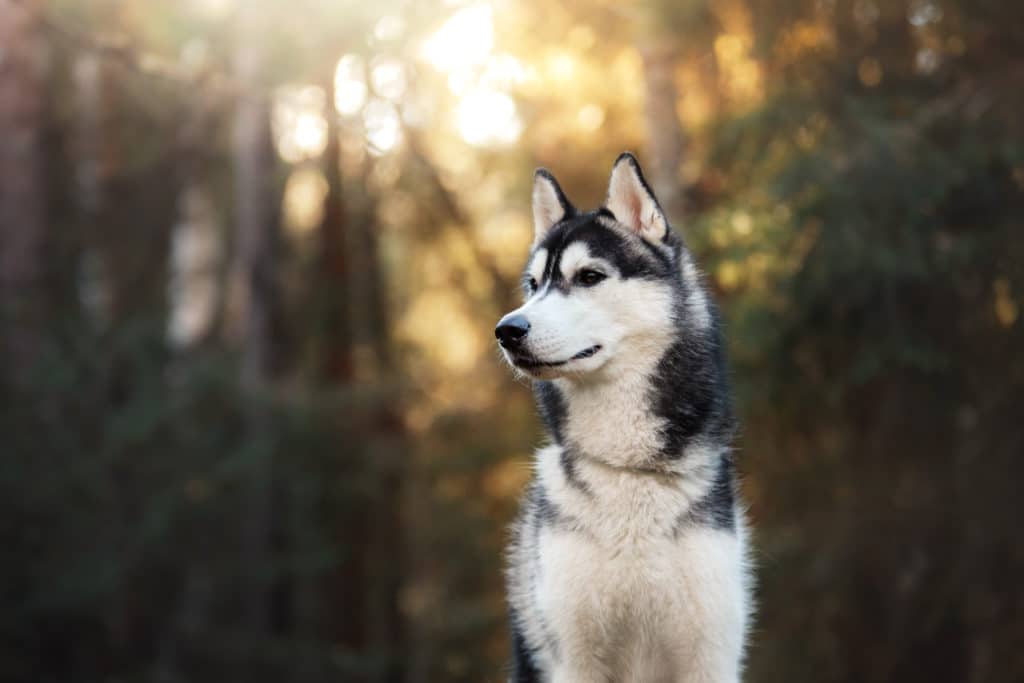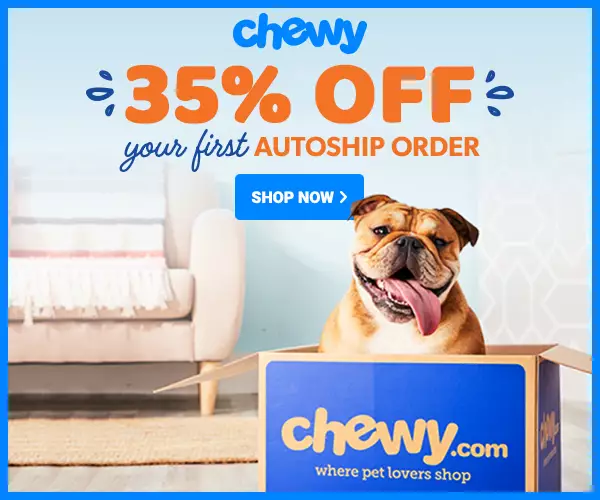7 Best Brushes for Siberian Huskies w/ 5 Brushing Tips for Their Complicated Coat

Contents
Huskies can do well in colder climates thanks to their or not one, but two coats. The outer, shiny fur is called their guard coat. This is the portion of for that most Siberian Husky owners cover when they go over their dog with a brush. The guard coat needs regular brushing to remove loose fur and to distribute natural oils through the Husky’s hair, keeping it shiny and moisturized.
Where much of the shedding comes from; however, is the undercoat. A Siberian Husky’s undercoat is a significant part of what gets shed when you find fur around the house. The undercoat is also a substantial part of what keeps a Husky cooler in the summer and warm in the winter.
What Is the Best Brush for a Siberian Husky?
The coat of a Siberian Husky can mat quite easily if not taken care of. Whenever a Husky’s coat gets severely matted, this can compromise the insulating qualities of the fur. Husky owners need to brush their Huskies daily. If daily brushing is not possible, grooming your Husky at home with the right tools is necessary at the very least a few times a week.
Siberian Huskies shed a lot, more than several other breeds of dogs. This shedding makes it imperative that a Husky owner has the right tools on hand to not only brush but the shed and rake through the undercoat regularly. This will not only help keep your home cleaner but will help your dog be more comfortable, mat-free, and maintain proper insulating qualities of their coat.
Different Types of Popular Siberian Husky Brushes
Deshedding Tool
Deshedding tools are perhaps among the most essential items in your grooming kit for a Siberian Husky. Deshedding tools work similar to an undercoat rake, but typically have teeth that are closer together and one even length. Deshedding devices have blunt-tipped tines to help protect the skin from brush burn.
These tightly placed teeth help grip loose hair and remove deeper shedding from the undercoat. It’s best to first brush through your Husky’s fur to remove any mats and then go back through with the deshedding comb. These tools can take out large amounts of loose strands very quickly.
Dual-Sided/Combo Brush
A combo brush can be quite beneficial for breeds like a Husky. The double-sided brush typically has either a slicker brush or pin brush on one side, and more densely packed softer bristles on the other side, such as nylon, bamboo, or boar bristles.
The pin brush side is excellent for first working through to remove mats in an initial brushing. Then going back through over the guard coat with the boar, nylon, or bamboo bristles helps to distribute natural oils and give your canine’s fur a shiny luster.
Rubber Multi-Use Brush
A rubber multi-use brush can be helpful for more intense grooming sessions when you want to use a few different tools to go easy on your dog’s skin while also removing a lot of hair.
These rubber brushes have thicker teeth, and the rubber properties help to grip loose strands while still being gentle on the dog. These brushes can be perfect for every day brushing to maintain skin health and keep up on shedding control.
Undercoat Rake
Undercoat rakes are another essential tool for Siberian Huskies. These combs are excellent for using a couple of times a month and more frequently during shedding seasons. The curved teeth are dull on the ends but sharp in the center to help cut and remove excess undercoat.
Undercoat rakes can help thin out areas that are prone to matting and help stagger the length of hairs in the undercoat.
Slicker Brush
A slicker brush is one of the best go-to brushes for dog grooming. Slicker brushes are fantastic while using the line brushing technique for initially removing mats, distributing natural oils, getting down to a bit of the undercoat, and smoothing over the guard coat.
Slicker brushes do not remove quite as much fur as a deshedding tool or undercoat rake, but slicker brushes can maintain consistent fur control quite well if used frequently.
Best Husky Dog Brush
| Our 2024 Picks: Husky Dog Brush Recommendations: | |||
| Rank | Dog Brush | Price | Rating |
|
#1 |
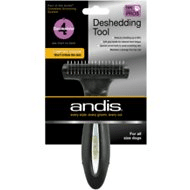 |
$$ |
A+
|
|
#2 |
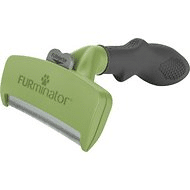 |
$$ |
A+
|
|
#3 |
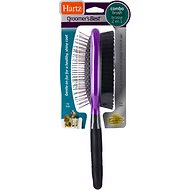 |
$ |
A+
|
|
#4 |
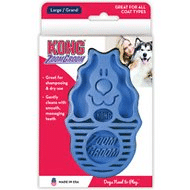 |
$ |
A+
|
|
#5 |
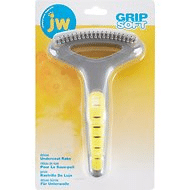 |
$ |
A
|
|
#6 |
 |
$ |
A
|
|
#7 |
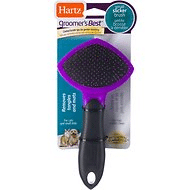 |
$ |
A
|
Andis Premium Deshedding Pet Tool
Our Hands Down Favorite
The Andis premium deshedding tool is a top of the line deshedder with a well-constructed comb. This deshedder is said to reduce shedding by up to 90 percent, making for a cleaner home, less matting, and a more comfortable dog.
The ergonomic handle and lightweight style of this tool make it easy to use it for more extended periods, while the curved teeth prevent irritation on your Husky’s skin. This deshedder can be used a few times a week for shed control maintenance and can be used daily when your Husky is blowing their coat.
The Andis deshedder is well made and among the highest rated deshedding tools for double-coated dogs.
6 More Top-Rated Siberian Husky Dog Brushes
FURminator deShedding Edge Dog Brush
FURminator’s deshedding edge dog brush is top-rated for a good reason. Removable combs can be easily cleaned and switched out, and this deshedder comes in three sizes and two hair lengths, for a total of six different comb options.
The blunt edge is smooth on your Husky’s skin while the close-set teeth grip loose fur to remove the majority of shedding. When used in a line brushing fashion, this deshedder reaches deep within the hair of your Husky to groom not only the guard coat but also the thick, dense undercoat.
Hartz Groomer’s Best Combo Dog Brush
The Hartz groomer’s best combo brush is a double-sided tool with a stainless steel pin brush on one side and a densely packed nylon bristle brush on the other. The pin brush side is ideal for the first round of brushing to line brush, removing mats and deeper loose fur. The nylon bristle side is perfect for the polishing brush on the guard coat to distribute natural oils and give your Husky a sheen.
This affordable brush has a non-slip handle, which can be essential while grooming the dense coat of a Husky. For those who need a few tools but don’t want a full arsenal of dog brushes taking up space, this double-sided model is a fantastic option.
KONG Dog ZoomGroom Multi-Use Brush
Kong’s ZoomGroom brush is an incredibly useful multi-purpose brush. The full rubber construction of this brush can be used in both dry brushing and during bathing. The soft rubber teeth are not only gentle on your dog’s skin but help massage and stimulate blood flow to the area.
The ZoomGroom brush is best for frequent use, rather than more intense deshedding sessions. Using this multi-use brush daily or every other day will help control the amount of shedding in your home while also getting your Husky used to more frequent grooming.
JW Pet Gripsoft Double Row Undercoat Rake
JW Pet’s double row undercoat rake is an affordable deshedding tool that is incredibly effective at removing excess fur. The curved teeth are angled at 90 degrees to make it more comfortable on your hand and wrist while also protecting your Husky’s skin.
The double row of teeth on this rake reach deep into the undercoat when line brushing to remove loose fur and control shedding. This tool is ideal for weekly use and even more frequent raking when your Husky is blowing its coat.
FURminator Firm Slicker Brush for Dogs
The FURminator firm slicker brush is a double-sided slicker brush made with anti-microbial plastic and flexible metal bristles. One side has straight quills, while the other side has bent, angled bristles. The two differing sides offer you options when it comes to brushing through your Husky’s coat.
Another exciting design feature is the split-middle paddle, which is flexible to contour to your dog’s body more than a flat, solid unit paddle. This slicker brush has an ergonomic handle with anti-slip grips and is large enough to handle a Husky’s coat. The FURminator slicker brush is ideal for use multiple times a week and during heavy shedding seasons, as it can be used for line brushing and removing large amounts of fur.
Hartz Groomer’s Best Slicker Brush
The Hartz groomer’s best slicker brush has an angle paddle head and smaller size for getting into hard to reach areas. This brush is ideal for thorough brushing where larger paddle brushes cannot effectively comb through.
The extra fine metal bristles are tipped with plastic to reduce the risk of brush burn on your dog’s skin. The slicker brush design is still efficient at removing a lot of hair even with the smaller size of this brush. When used carefully, this brush can be fantastic for under your dog’s chin and neck, behind the ears, around the edge of the face, and in the creases of the legs—the spots where other brushes can be cumbersome.
5 Simple Tips to Properly Brush a Siberian Husky
Siberian Huskies can be high-maintenance with their thick double coats. Shedding can become a problem, but even more, mats are unhealthy for your huskie’s temperature regulation if neglected. Some guidelines for brushing your Husky are as follows.
- Always use the line brushing technique. Start in one area and focus on thoroughly brushing out that spot before moving onto the next. You can do one area per day and rotate to cover your entire dog over a week.
- Use a pin brush or slicker brush for the first round to remove mats and the initial loose fur, then go back and check with a wide tooth comb if you have one.
- After your initial brushing, go through with a deshedding tool or undercoat rake, again using the line brushing technique, to remove substantial amounts of loose fur.
- Finish with a polishing brush using a nylon or natural fiber bristle brush if you have one on the top guard coat.
- Maintain your brushing routine and keeping shedding under control by brushing daily or every other day with a slicker brush or rubber multi-use brush.
Owning a Husky takes commitment to keep their double coat in healthy condition and keep your house somewhat under control with fur. At the very minimum, you should brush your Husky thoroughly a few times a week, preferably more.
FAQ Regarding Siberian Husky Brushing/Grooming
- How often should I brush my Siberian Husky? Ideally, a Husky should be brushed every day. Even if you only groom one section of your dog per day, this helps to stay on top of a large amount of shedding this double coat breed does. If you can’t manage every day, schedule a time to brush your Husky every other day or a few times a week, minimum.
- Can I overbrush my Husky? Like anything in life, of course, too much of a good thing can become a problem. If you have the time to brush your Siberian Husky daily and spend more than, say, a half hour daily brushing them, their skin can get irritation or brush burn. Regular brushing for anywhere from five to 20 minutes should be sufficient for daily maintenance.
- Can I brush my Husky in the bath? Yes, brushing a Husky in the bath can help remove dirt and loose fur. However, you should be sure to protect your drain with a fur or hair catcher, as strands can clog your drain quickly. Using a rubber multi-use brush can be efficient in the bath. Wide-tooth combs can also be useful in the tub when you use them very cautiously. Never tug or yank hard on a mat or tangle, whether your Husky is wet or dry.
- Will trimming my Siberian Husky reduce shedding? Technically, no. Giving your Husky a close trim may make fur less noticeable when Huskies shed, but if your dog is blowing their coat or even with normal shedding, they will still drop hair. The strands will just be shorter when it falls out. If you give your Husky too close of a cut and have your dog outside for prolonged amounts of time, they can actually get a sunburn. A closer cut might help them stay chiller during the summer but be aware of how long your Husky is in the sun and make sure they have shade when they have a short trim.

